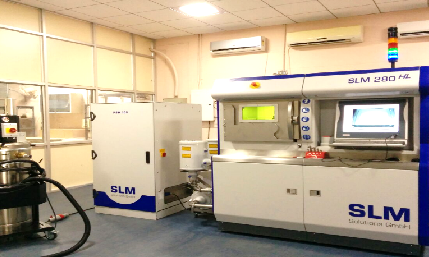Additive manufacturing, or 3D printing as it is popularly called, is fast gaining importance the world over as it has opened up possibilities for a new world of design innovation. International Advanced Research Centre for Powder Metallurgy and New Materials establishes a technology demonstration centre for additive manufacturing, to expose Indian manufacturing sector to the latest technology.
Hyderabad (ISW) – Additive manufacturing, or 3D printing as it is popularly called, is fast gaining importance the world over as it has opened up possibilities for a new world of design innovation.
The International Advanced Research Centre for Powder Metallurgy and New Materials (ARCI) – an autonomous institution under the Ministry of Science and Technology – has established a technology demonstration centre for additive manufacturing, to expose Indian manufacturing sector to the latest technology.
It is now possible to produce objects of almost any shape or geometry by using digital model data from a 3D model or an electronic data source such as an additive manufacturing file (AMF). The file type called STL, one of the most common formats 3D printers can read.
Unlike conventional systems, where material is removed through machining and other processes for producing an object, 3D printing or additive manufacturing builds a three-dimensional object from computer-aided design (CAD) models or AMF files by successively adding material layer by layer.
Main advantage with additive manufacturing is that it can produce objects with highly complex designs. In conventional methods, every complex detail has to be produced through additional tool paths or other such extra steps. Additive process does not require hard tooling to be produced or assembled. There are, therefore, no typical production related costs that often need a large production run in order to justify them. Even a single piece can be printed in a cost-effective manner. Additive manufacturing is being used in several sectors including automobile, biomedical, and aerospace industries.
The ARCI, engaged in developing new materials and processes, has expertise in areas such as nano-materials, powder metallurgy, ceramics, coatings, laser processing and fuel cells. The new technology demonstration centre for 3D printing is as part of an effort to help the Indian economy make the best use of the emerging technology. It has been set up in collaboration with SLM Solutions of Germany, a leading international manufacturer of 3D metal printers.
“Its major objective was to offer an opportunity for the Indian industry to understand the advantages of the additive manufacturing technology over the conventional methods,” said Dr. Gururaj Telasang of ARCI’s Centre for Laser Processing of Materials.
The Centre has a powder bed additive manufacturing machine that works on selective laser melting principle. It is designed for medium to high volume metal part productions and prototypes with high precision and surface quality. It is equipped with a 400 W Ytterbium Fibre laser. A wide range of materials including stainless steel, cobalt-chrome, nickel alloys, aluminum and titanium can be processed.
Hybrid processes that combine the laser additive manufacturing and the conventional techniques are also being tried out to produce new generation engineering components. Besides, efforts are on continuously to improve upon the processes to make them as innovative, sustainable and environmentally friendly as possible. “A major aim of the centre is to help develop and produce next generation aerospace components, biomedical parts and special tools and dies,” Telasang added.


